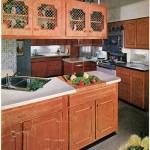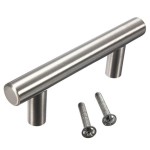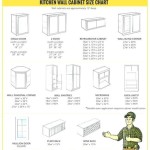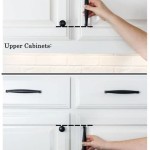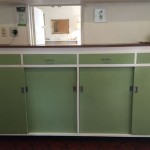Essential Aspects of Installing Crown Molding on Upper Kitchen Cabinets
Crown molding adds a touch of elegance and sophistication to any kitchen. When installed on upper cabinets, it creates a seamless transition from the cabinets to the ceiling, making the space feel more polished and complete. Installing crown molding may seem like a daunting task, but with the right tools and a little bit of guidance, you can easily achieve professional-looking results.
Materials and Tools
Before you begin, gather all the necessary materials and tools. You will need:
- Crown molding
- Miter saw or chop saw
- Caulk gun
- Caulk
- Painters tape
- Brad nailer or finishing nails
- Hammer
- Level
- Measuring tape
- Pencil
Measuring and Cutting
Start by measuring the length of the cabinets and transferring those measurements to the crown molding. Use a miter saw or chop saw to cut the molding at a 45-degree angle at each end. Test the fit of the cut pieces by holding them together at the corner. Make any necessary adjustments to the angles until the pieces fit together seamlessly.
Installing the Crown Molding
Apply a thin bead of caulk to the back of the crown molding where it will meet the cabinet and the ceiling. This will help seal any gaps and prevent drafts. Press the molding into place and secure it with brad nails or finishing nails every 12-18 inches. Use a level to ensure the molding is straight and flush with the cabinet and ceiling.
Mitering the Corners
When you reach a corner, you will need to miter the molding so that the pieces fit together seamlessly. To do this, cut the first piece of molding at a 45-degree angle as described above. Then, place the second piece of molding on top of the first and align the edges. Use a pencil to mark the angle where the two pieces intersect. Cut the second piece of molding along this line, and it should fit perfectly against the first piece.
Finishing Touches
After the molding is installed, apply a bead of caulk to any gaps around the edges. Smooth the caulk with a damp finger or putty knife. Once the caulk has dried, you can touch up any nail holes with wood filler or spackling paste. Finally, paint or stain the molding to match the cabinets and complete the look.
Tips
Here are a few tips to help you achieve a professional-looking installation:
- Use a sharp saw blade for clean cuts.
- Test the fit of the molding pieces before nailing them in place.
- Apply caulk sparingly to avoid creating a mess.
- Use a level to ensure the molding is straight.
- Be patient and take your time, and you will be rewarded with beautiful results.

Adding Crown Molding To Kitchen Cabinets Young House Love

How To Add Crown Molding Kitchen Cabinets Abby Organizes

Diy Kitchen Cabinet Upgrade With Paint And Crown Molding

Diy Kitchen Cabinet Upgrade With Paint And Crown Molding

Adding Crown Molding To Kitchen Cabinets Young House Love

How To Add Crown Molding Kitchen Cabinets Abby Organizes

How To Install Crown Molding On Kitchen Cabinets

How To Install Crown Molding On Kitchen Cabinets Sawdust Girl

Adding Crown Molding To Kitchen Cabinets Young House Love

How To Attach Crown Mouldings Frameless Cabinets Stonehaven Life
Related Posts

